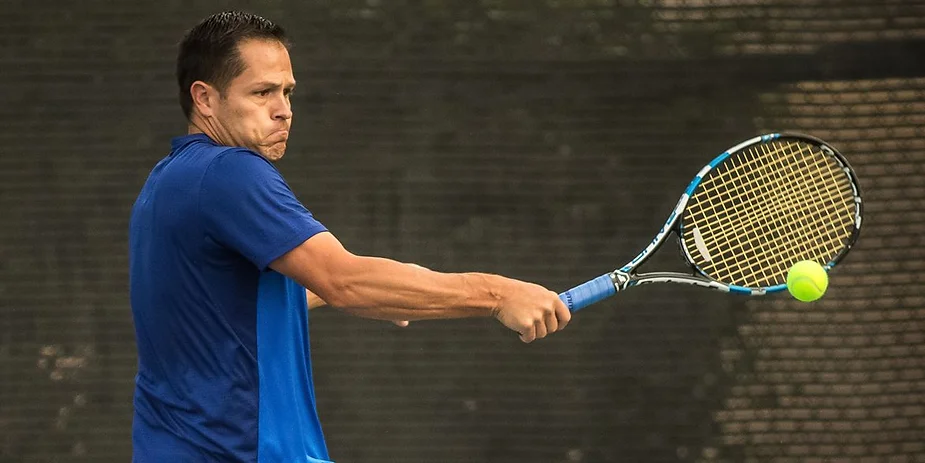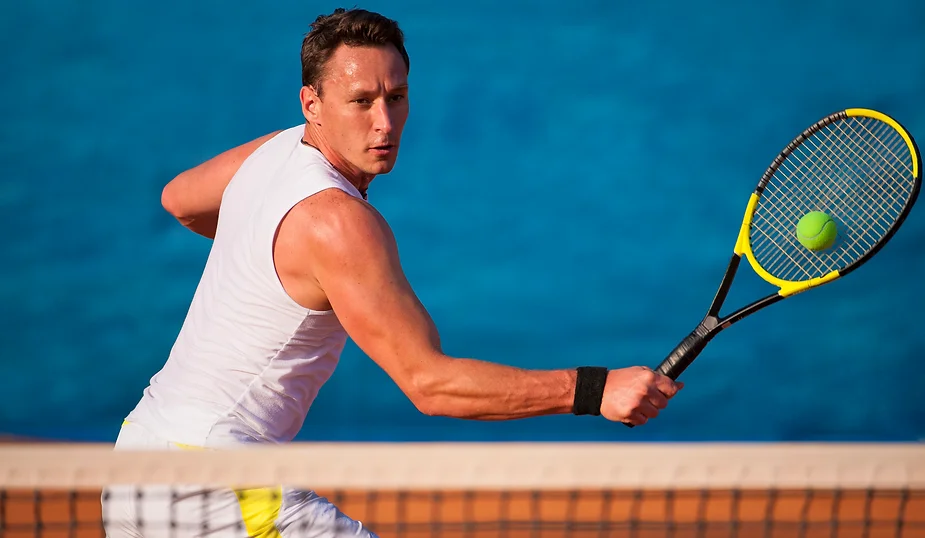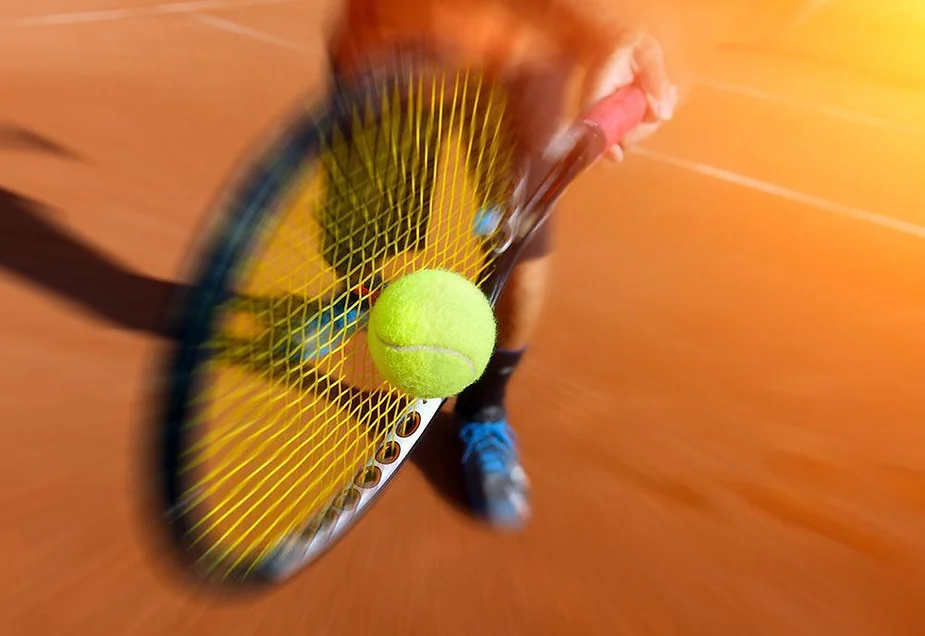Introduction
When playing tennis, the way you hold the racket affects your performance. Your grip style is determined by the angle between your index finger and heel pad. It’s common to have a different grip for different shots, such as the serve, backhand, and forehand. Changing the tennis grips helps improve your shot technique. Keep in mind that having correct grip style is key to playing tennis well.
Tennis players have been gripped for centuries. There are many different gripping styles that can give the players an advantage on the tennis court, depending on their playing style and the speed of the court. Some grips are better for slower courts since they create more topspin, while others are better for fast courts.
Let’s get started!
Holding a Tennis Racquet
It’s important to know how to properly hold a tennis racket. First, familiarize yourself with the grip of the racket which is the part of the racket that you hold and the way it’s held. To get the correct grip, use your dominant hand and place it below the bottom of the handle.
Your other hand should then cover your dominant one holding it with slightly less pressure. Make sure your index finger is extended and feel its tension against the handle to ensure your grip is firm. Your hands should also be placed equidistant apart so you can easily move between forehand and backhand shots. Now you’re ready to swing away!
The grip of a tennis racket is made up of eight sides, also known as bevels. These bevels are numbered one to eight to make it easier to identify them. Rotating your hand around the bevels will change the position of your grip. For right-handed and left-handed players, the numbers are mirrored to each other.
Tennis rackets come in different sizes and shapes, with grips to match. It’s important to remember that no one grip works for everyone. Each grip comes with its own advantages and disadvantages, so it’s important to consider what’s best for you before deciding which one to use.
Hold a Tennis Racket with Different Type of Grip
1. Eastern Forehand Grip
The Eastern Forehand Grip is a great option for beginner tennis players. It provides a balanced combination of power, control, and moderate topspin, making it easy to start mastering the fundamentals of the game. With this grip style, you’ll be able to produce powerful shots and maintain full control over your tennis strokes for improved accuracy. It’s one of the most popular ways to hold a racket when hitting forehands, so don’t miss out on its benefits!
Tennis players need to ensure they have the correct grip before hitting the court. If you’re right-handed, place your index knuckle against the third bevel of the racket handle. Lefties should place theirs on the seventh bevel.
Wrap the rest of your fingers around the handle, keeping them slightly apart for a secure grip. Place your thumb against the back of the handle for added support. With this Eastern Forehand Grip in place, you’ll be well on your way to mastering your game.
When holding the racket, the Eastern Forehand Grip should feel like you’re shaking hands with it. This makes it a natural and comfortable grip for beginners.

2. Continental Grip
The Continental Grip used to be the go-to grip for tennis players before modern times. Nowadays it’s not used as frequently for forehands, but it’s still good to know how to form it. There are a few other shots where the Continental Grip still comes in handy, too. It’s helpful to understand how this grip has evolved, and it’s easy to learn how to do it. So make sure you take the time to master this classic tennis technique.
Continental Grip offers an easy way to handle low-bouncing balls. It also requires little to no grip change for other shots. This makes it a great option for beginners and experienced players alike. With this grip, you can get the most out of every shot, from volleys to serves. And it’s simple and comfortable to use, so you can play for hours without any trouble.
But continental Grips have their drawbacks too. These include difficulty in hitting topspin shots, low power potential, and trouble in controlling the ball when it’s bouncing high. Forming a continental grip is simple. For right-handed players, place your index finger’s bottom knuckle against the second bevel. For left-handers, it’s the eighth bevel. Wrap your fingers around the racket and rest the butt of the handle at the base of your palm. Now you can start playing with the continental grip.
3. Eastern Backhand Grip
To hit a one-handed backhand, you’ll need an Eastern backhand grip. To form this grip, rest your index knuckle and heel pad on bevel #1. This grip provides you with spin and control as you hit your backhand. You can even mix it up by using a Western forehand grip instead for added versatility.
The Eastern Backhand Grip offers plenty of control and spin. Players can make fast switches between Eastern grip and Continental grip, making it ideal for those looking to tennis serve or volley. Meanwhile, it’s also a go-to choice for kick serves. The Eastern Backhand Grip can be difficult when it comes to hitting shots at shoulder height. This grip can make it more challenging to get the ball in the desired place.

4. Semi-Western Grip
The semi-western grip is the perfect compromise between the eastern and western grips. This makes it the most commonly used forehand grip in today’s tennis. It’s great for producing a lot of topspin and changing your grip quickly. With the semi-western grip, you can be sure you’re set up to perform your best.
The semi-western grip was popularized by tennis players like Andre Agassi and Martina Hingis in the 1990s and 2000s. Nowadays, it’s used by pros like Serena Williams and Novak Djokovic. In fact, it’s one of the most common grips among tennis players at all levels. You can use the grip to generate tremendous power with your shots, making it a popular choice for those looking to take their game to the next level.
The semi-western grip offers a range of advantages for both beginner and advanced players alike. This grip is great for creating powerful topspin shots and it is also versatile enough to enable quick grip changes.
Ideal for baseline and all-court play, the semi-western grip provides a strong defensive position against higher bouncing balls. This grip can be used on all court surfaces, however it could pose difficulty with low balls or when a player has to stretch wide outside their strike zone.
For a right-handed player, the bottom knuckle of the index finger should be placed against the fourth bevel. For a left-handed player, the sixth bevel should be used. The butt of the racquet’s handle should rest at the base of the palm and fingers should be wrapped around the handle.
5. Western Grip
To achieve the Western grip, you need to line your index knuckle and heel pad up with bevel 5. This grip can make it tricky to maintain a consistent game, but it does offer an advantage: you can really put topspin into your shots.
The Western Grip is the perfect choice for players who want more topspin. It’s known for causing balls to bounce high and fast off the racket, with a contact point slightly out in front of you. This grip gives you greater control for adding spin and is easy to learn. However, the Western grip is hard to use if you’re looking to hit low balls. It can also take some time to get used to it, plus it can be a bit tougher on faster surfaces. Changing to and from this grip takes more effort too.

6. Hawaiian Grip
The Hawaiian Grip, also known as the extreme-western grip, is rarely used in tennis today. This is due to a few major drawbacks. It can be hard for players to make the ball go straight when using this grip, and it can be tricky to add extra spin to shots. Without this extra spin, competing at higher levels of tennis may be out of reach as it can be difficult to hit through the opponent and put shots away. All these factors combined have made the Hawaiian Grip less popular.
Hawaiian Grip is designed for experienced players to generate higher levels of topspin. However, it can be challenging to quickly switch grips, and generally harder for beginners to learn. In addition, using Hawaiian Grip increases the likelihood of injury, makes it tough to drive the ball and play offensively, and makes it difficult to handle low balls or shots causing players to stretch wide outside their strike zone.
Form a Hawaiian grip by pressing the bottom knuckle of your index finger against the fourth bevel if you are left-handed or the sixth bevel if you are right-handed. Place the end of the racquet handle in your palm and wrap your fingers around it. That’s it – you have formed a Hawaiian grip.
Conclusion
In conclusion, employing a different tennis grip can greatly enhance one’s performance on the court. One area where this can be particularly beneficial is in executing the two-handed backhand stroke. Choosing the appropriate grip size for a player’s hand is crucial in achieving optimal control and power. Furthermore, the right tennis grip allows players to generate more spin by utilizing the modern tennis technique of brushing the ball.
For instance, for right-handed players employing a two-handed backhand stroke, using the continental (or eastern) grip with their non-dominant hand can provide improved control and consistency. Understanding the nuances in grip can also help players execute different types of forehand grips, such as the semi-western or western grips, which are effective in generating topspin.
Therefore, investing time and effort in mastering different tennis grips can undoubtedly help players elevate their game and become more well-rounded on the court.
Good Luck!





